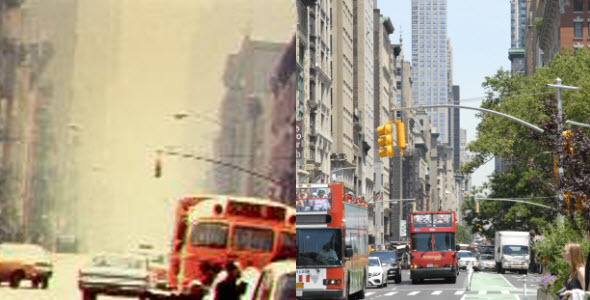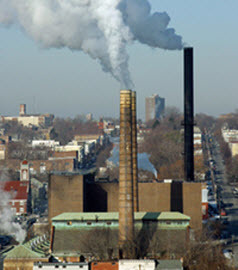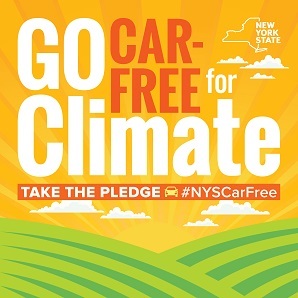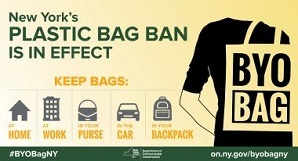What is Smog, Smoke Opacity and More - Air Mail!
The New York State Department of Environmental Conservation sent this bulletin on 09/24/2020 02:29 PM EDT |
| DEC Delivers - Information to keep you connected and informed from the NYS Department of Environmental Conservation |
| Share or view as a web page || Update preferences or unsubscribe |
This Month's Topics: |
Public & Stakeholder Participation Information:
Additional information and access to past announcements are on our Public & Stakeholder Participation Information page. Air Mail! is the publication to announce public and stakeholder information about air quality topics. All New York State residents are environmental stakeholders – we welcome anyone to join the information sessions and other opportunities posted here. Happy Birthday, Air Mail!Air Mail! is celebrating its 3rd anniversary this month. Spread the word by telling your friends to sign-up for Air Mail! Thank you for your readership. What About Smog?We often use the word “smog” to describe air pollution, but what does it actually mean? Smog was first used to describe the mix of smoke and fog covering large cities in the 1950s. It now refers to the pollutants that contribute to ground level ozone: particulate matter, nitrogen oxides, and volatile organic compounds. Technically, smog and ozone are not the same things. Ozone (O3), which is three oxygen atoms, is created when pollutants react with sunlight to make the harmful gas at ground level. With smog and ground level ozone being different, why do we still use them interchangeably? Smog has been synonymous with ozone for at least the last 50 years, making it hard to erase without some confusion. At DEC, we are trying to phase out the term smog, even though it is widely understood as the blanket of pollutants making our urban areas unhealthy in the summer. “Ground level ozone” doesn’t have the punch of “smog,” despite it being technically correct. Whatever you call it – smog or ground level ozone – it is dangerous for both the environment and people, especially the young and elderly and those with pre-existing lung and heart conditions. Prolonged exposure to ozone can worsen lung and heart disease, as well as trigger asthma symptoms. Check the AQI for daily ozone forecasts, and subscribe to Air Quality Alerts so you can stay air aware.
Photo Caption: Left; A NYC street corridor showing heavy smog in the 1970s. Right; An example of the smog free NYC we enjoy today. A Brief History of DARDEC is celebrating its 50th birthday this year, and that also means 50 years of the Division of Air Resources (DAR). As we celebrate the progress we have made so far, let’s look back at the state of our air a half-century ago. Just over 50 years ago, NYC had some of the worst air pollution in the country with multiple major smog events in 1953, 1963, and 1966. Temperature inversions caused these events by trapping high amounts of sulfur dioxide, carbon monoxide, and smoke in the city's air. These air disasters sparked regulatory actions across the U.S. The passage of the 1955 Air Pollution Control Act was the first of these, giving funding to states and local governments for research into pollution emissions and monitoring technologies. Air pollution research began in 1957 in NYS with a small unit in the Department of Health. In 1970, air pollution control and research moved to the newly created NYS Department of Environmental Conservation, where it remains today. It has taken decades of work by public and private sector individuals and organizations across NYS to reduce pollution levels to where they are today. As we celebrate 50 years of DEC, we’re committed to even cleaner, healthier air and will not allow regulations and other measures roll back and risk public health. It's important to remember that even small actions can significantly improve our air quality.
Article and Photo Source: “Smog Here Nears the Danger Point; Patients Warned.” New York Times, 25 November 1966, p. 1. Air Pollution Control Basics: Observing Smoke OpacityIn the July issue of Air Mail!, we talked about the history of reading smoke using Ringelmann charts. How do we currently determine smoke opacity? Modern technology provides automated devices (known as continuous opacity monitors) to measure smoke density inside large smokestacks. However, most opacity reading is conducted by the well-trained naked eye. DEC employees attend “smoke school” to learn about standard smoke reading principles, as outlined by Federal Reference Method 9. Method 9 defines how smoke reading is done and how it is used to enforce emissions regulations, and how it helps to make sure industries do not exceed pollution and opacity limits. Smoke reading also aids in ensuring that a facility’s emission control equipment is working properly, enabling them to identify problems quickly. Method 9 is used to determine smoke density from various smoke sources, including smokestacks, chimneys, exhaust pipes, and even certain diesel-fueled vehicles, just to name a few. When observing a plume, smoke readers make six-minute observations, recording the smoke’s opacity every 15 seconds for six minutes to determine the smoke’s average density. While transparent smoke is less dense and may contain water vapor, these lighter smoke plumes may still contain hazardous pollutants and must be examined closely for an accurate reading. Very dense, opaque smoke is also dangerous to breathe. It contains pollutants such as particulate matter (PM), nitrogen oxides, and other harmful gases. PM and other smoke pollutants pose a serious health risk to people, especially children and the elderly. Fine PM - particles less than 2.5 micrometers - can get very deep into the lungs, aggravating respiratory and cardiovascular diseases. DEC smoke readers are recertified every six months to keep an eye on smoke and PM pollution. Check the AQI for updates on PM pollution in your area and breathe easy, NY! Go “Car-Free for Climate” Event
Don’t Forget Your Reusable BagsDEC will begin enforcing the State’s ban on single-use plastic carryout bags on Oct. 19, 2020. Enforcement of the plastic bag ban, which went into effect on March 1, was suspended for a time per an agreement reached in NYS Supreme Court. DEC has continued to encourage New Yorkers to use reusable bags wherever and whenever they shop with the #BYOBagNY campaign, launched earlier this year. New Yorkers use an estimated 23 billion Additional information about the bag ban, as well as tips for keeping reusable bags clean, can be found on DEC's website. Helpful Links:
Dates to Remember:
Stay Informed about Your Air QualityNYS' ozone season runs from April through September. DEC publishes ground-level ozone forecasts during ozone season and particulate matter pollution forecasts year-round using a scale called the Air Quality Index (AQI). DEC sends out an air quality alert when there is a high AQI value, which indicates polluted air. Individuals with pre-existing respiratory or cardiovascular conditions and people who exercise outdoors should take caution during an air quality alert. Find out if an Air Quality Alert is in effect by calling the toll-free Ozone Hotline: 1-800-535-1345. The AQI can be accessed in three ways:
We would like to know what you think. Please send your Air Mail! questions or comments to us at DAR.web@dec.ny.gov. |




 Join thousands of our fellow New Yorkers by participating in the
Join thousands of our fellow New Yorkers by participating in the  plastic bags annually, each for only about 12 minutes. When we improperly dispose of them, plastic bags create pollution and are often seen stuck in trees or floating in waterways. They pose threats to fish and wildlife, clog machinery at recycling facilities, and litter the pristine outdoor places where we spend time with our friends and family.
plastic bags annually, each for only about 12 minutes. When we improperly dispose of them, plastic bags create pollution and are often seen stuck in trees or floating in waterways. They pose threats to fish and wildlife, clog machinery at recycling facilities, and litter the pristine outdoor places where we spend time with our friends and family.